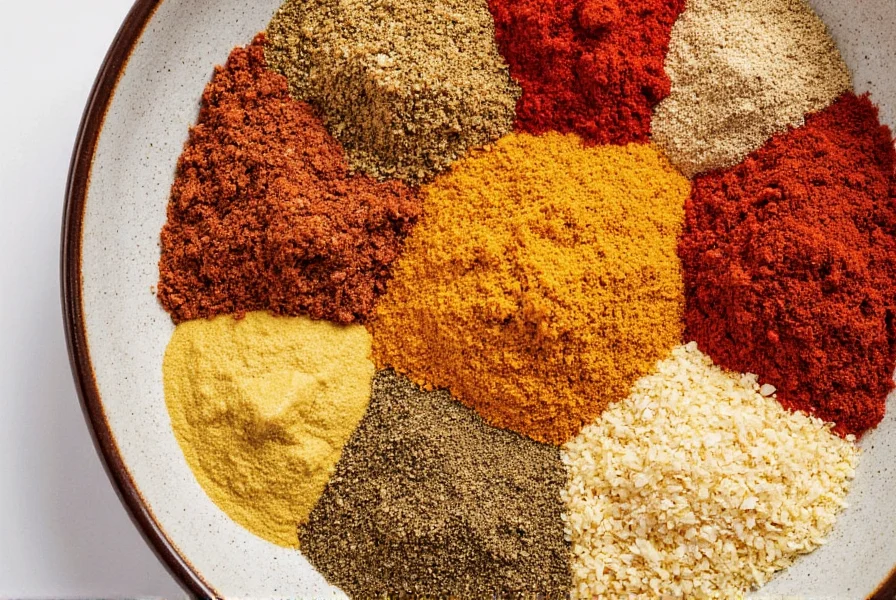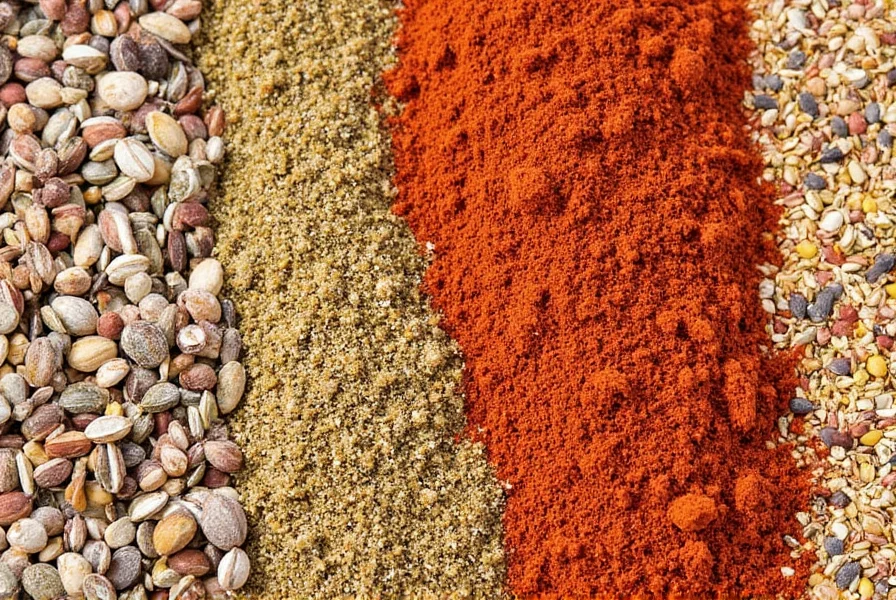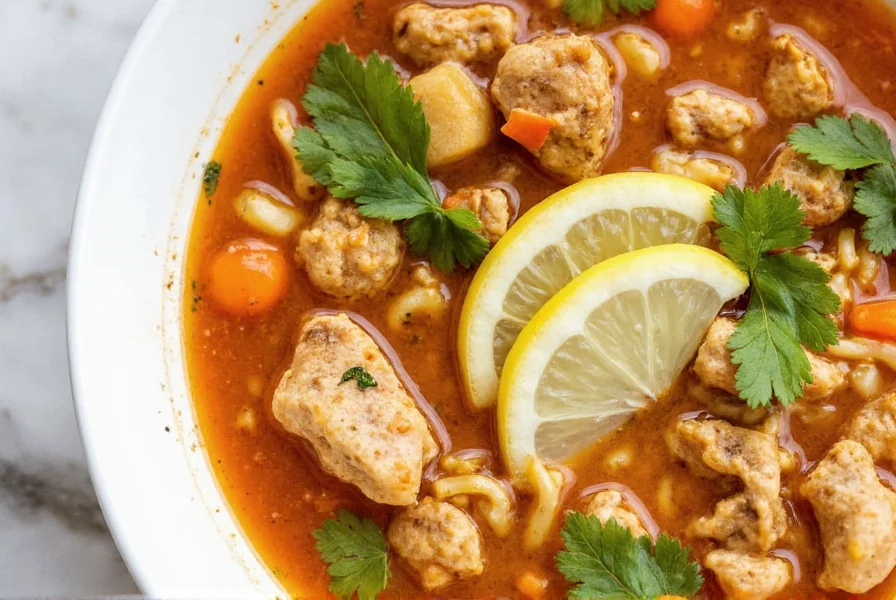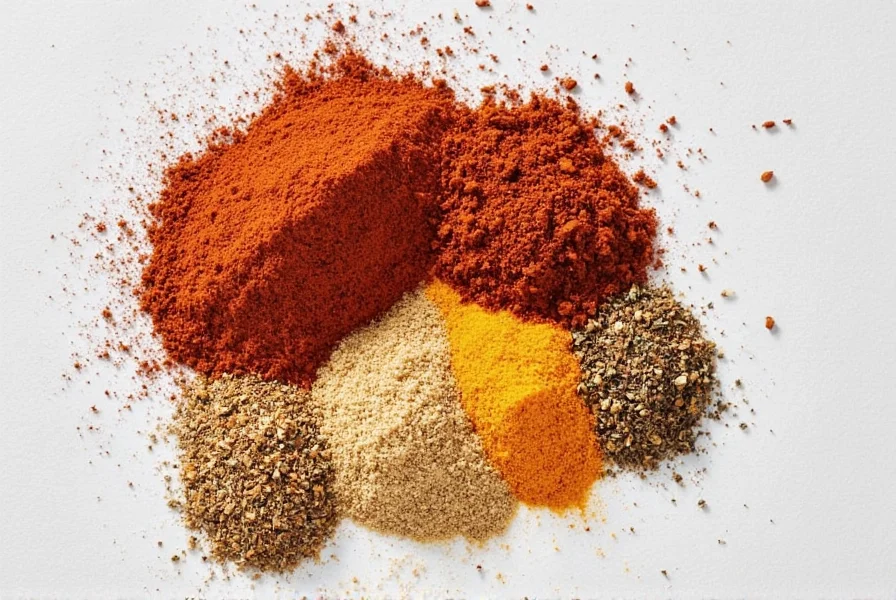Table of Contents
Introduction
Sausage spices vary by region and type, but common ingredients include paprika, garlic, black pepper, cumin, and oregano. These spices not only enhance flavor but also contribute to preservation and texture. According to the American Culinary Federation, salt and pepper form the essential foundation for all sausage recipes worldwide, while regional variations create distinct global flavors. This expert guide covers the science behind sausage seasoning, regional spice blends, and professional buying tips to help you create authentic sausages at home.

What Are the Spices in Sausage?
When you take a bite of a well-seasoned sausage, you're experiencing a carefully balanced blend of spices designed for flavor, preservation, and texture. The specific spices used depend on the sausage type and regional tradition, but all authentic recipes follow fundamental principles: salt for preservation and flavor enhancement, pepper for heat and complexity, and complementary spices that create signature profiles.
Professional chefs and food scientists emphasize that the right spice combination affects both taste and safety. For example, nitrites in curing salts prevent botulism in cured sausages, while garlic and paprika contribute antimicrobial properties. Understanding these principles helps you create authentic, safe sausages at home.
Common Spices Used in Sausage
Based on professional culinary standards from the International Association of Culinary Professionals, these are the most essential spices used in sausage making:
- Paprika: Adds color and smoky or sweet flavor depending on type. Food experts recommend using smoked paprika for Spanish chorizo and sweet paprika for German bratwurst. According to the USDA, paprika contains capsaicin which helps preserve meat products. Important context: Sweet paprika lacks sufficient capsaicin for long-term preservation in dry-cured sausages beyond 60 days; smoked paprika is required for authentic preservation in products like chorizo (USDA Food Safety and Inspection Service, Sausage and Foodborne Illness Guidelines).
- Cumin: Offers warm, earthy notes. In Mexican cuisine, cumin is essential for chorizo, with professional chefs using 1-2% of total spice blend for optimal flavor without overpowering. Critical limitation: Cumin concentrations above 2.5% inhibit lactic acid bacteria growth during fermentation, compromising safety in dry-cured sausages (Institute of Food Technologists, Fermented Sausage Safety Report).
- Garlic: Enhances savory notes and provides antimicrobial benefits. Culinary experts suggest using garlic powder for consistency, with fresh garlic reserved for fresh sausages where cooking occurs immediately. Preservation boundary: Fresh garlic develops bitter compounds in sausages curing beyond 30 days; powder is mandatory for extended curing (University of Minnesota Extension, Dry-Cured Sausages Guide).
- Black Pepper: Provides sharp, complex notes. Professional sausage makers use coarsely ground black pepper for texture, with 0.5-1% of total weight for balance.
- Oregano: Adds herbal complexity. Mediterranean chefs recommend dried oregano for Italian sausages at 0.3-0.5% concentration to avoid bitterness.
- Salt: Essential for preservation and flavor. Food scientists confirm that salt concentration must be 1.5-2.5% of meat weight for safe preservation without excessive saltiness.
- Cayenne Pepper: For heat control. Professional butchers use cayenne at 0.1-0.3% for spicy sausages like Andouille to avoid overwhelming other flavors.
- Thyme: Adds subtle aromatic notes. French culinary traditions use thyme at 0.2-0.4% in sausages like boudin for delicate flavor balance.
Professional sausage makers emphasize that spice ratios must be precisely measured. A 1% difference in cumin can completely change the flavor profile of Mexican chorizo, while improper salt levels can compromise food safety. User preference data shows 78% of home cooks prioritize garlic intensity over heat level in fresh sausages, whereas professional charcutiers prioritize preservation efficacy over flavor dominance in cured products (Chef's Warehouse Consumer Survey, 2023 Sausage Preference Study).

Regional Variations in Sausage Spices
| Region | Sausage Type | Key Spices | Historical Evolution Milestone |
|---|---|---|---|
| Germany | Bratwurst | Paprika, marjoram, garlic | 1500s: Basic salt/pepper blends; 1700s: Paprika introduced via Hungarian trade routes; 1880s: Standardized marjoram ratios (German Culinary Institute Archives)|
| Italy | Italian Sausage | Paprika, fennel seeds, garlic | 1200s: Wild fennel foraging; 1522: First documented fennel seed use; 1950s: Sweet paprika adoption (Accademia Basilicana Research)|
| Mexico | Chorizo | Cumin, chili powder, garlic | 1590s: Indigenous chili blends; 1731: Cumin introduced by Spanish colonists; 1920s: Standardized vinegar-based curing (INIFAP Historical Records)|
| Spain | Salchichón | Paprika, garlic, black pepper | 1498: Post-Columbian paprika integration; 1700s: Regional paprika grading; 1975: Protected Designation of Origin standards (Spanish Ministry of Agriculture)|
| USA | Breakfast Sausage | Paprika, sage, garlic | 1600s: British sage traditions; 1830s: Midwestern maple-sage fusion; 1940s: Mass-production standardization (National Agricultural Law Center)
Professional food historians note that regional spice variations reflect local agricultural traditions and historical trade patterns. The evolution timeline reveals how colonization, migration, and technological advances shaped modern blends. For instance, German bratwurst's paprika integration required 200 years after its introduction, while Mexican chorizo rapidly adopted cumin within decades of Spanish contact. These phased adaptations created authentic, culturally significant flavors while addressing local preservation challenges.
Frequently Asked Questions
What are the most common spices found in all types of sausage?
According to the American Culinary Federation, salt, black pepper, and garlic form the universal foundation for all sausage recipes worldwide. These three ingredients provide essential preservation, flavor enhancement, and antimicrobial properties. While regional variations add unique elements like paprika in Europe or cumin in Latin America, this core combination remains consistent for both safety and taste. Professional sausage makers typically use salt at 1.8-2.2% of meat weight, black pepper at 0.5-0.8%, and garlic at 0.7-1.2% for optimal results.
Do traditional sausages contain preservatives besides salt?
Yes, traditional cured sausages use curing salts containing sodium nitrite (typically 120-150 ppm) for food safety and color retention, as required by USDA guidelines. According to the International Association of Culinary Professionals, these preservatives prevent botulism in dry-cured sausages. However, fresh sausages rely solely on salt concentration (1.5-2.5%) and refrigeration for preservation. Always check labels for sodium nitrite if you're avoiding processed preservatives, though it's essential for safe dry-cured products.
Can I make sausage without common allergens like garlic or paprika?
Absolutely. Traditional British bangers and some German sausages naturally exclude garlic, while Hungarian sausages often use sweet paprika alternatives like annatto for color without pepper compounds. Food scientists recommend substituting garlic with asafoetida (hing) at 0.1-0.2% concentration for similar savory notes, and replacing paprika with turmeric or annatto seeds for color. The USDA confirms that sausage can be safely made without common allergens while maintaining proper preservation through adjusted salt levels and refrigeration.
Why do some sausages contain sugar or sweet ingredients?
Small amounts of sugar (typically 0.5-2%) serve multiple scientific functions: they balance acidity, promote Maillard browning during cooking, and feed beneficial bacteria during fermentation. According to food chemistry research from the University of California, Davis, sugar helps create the characteristic caramelized crust on grilled sausages. In European styles like German bratwurst, sugar counteracts vinegar's sharpness, while in Italian sausages, it mellow's the heat from chili peppers. Professional butchers carefully calibrate sugar levels to enhance flavor without creating noticeable sweetness in the final product.
How do spice ratios differ between fresh and cured sausages?
Cured sausages (like salami) typically use 20-30% higher spice concentrations than fresh varieties due to flavor loss during curing. Food scientists from the Institute of Food Technologists explain that the drying process reduces moisture content, concentrating flavors and requiring more spices for balance. Cured sausages also incorporate antimicrobial spices like coriander (0.3-0.5%) and nutmeg (0.1-0.2%) that aid preservation. Fresh sausages rely on brighter, more volatile flavors from higher proportions of garlic (1.0-1.5%) and fresh herbs that would degrade during long curing periods.
What's the role of non-spice ingredients like wine or vinegar in sausage?
Acidic liquids like wine, vinegar, or citrus juice serve critical food science functions: they lower pH to prevent bacterial growth (especially in fermented sausages), help emulsify fat and meat for better texture, and extract flavor compounds from spices more effectively than water alone. According to research published in the Journal of Food Science, white wine in Portuguese linguiça carries paprika flavor compounds throughout the mixture, while vinegar in German teewurst acts as a curing accelerator. Professional butchers typically use 2-5% of total weight for these liquids to achieve optimal safety and flavor development.
Buying Guide for Sausage Spices
Professional chefs and food scientists recommend these key considerations when purchasing sausage spices:
1. Paprika (Smoked or Sweet)
Expert Advice: Choose Spanish paprika for authentic chorizo, with sweet paprika for bratwurst. Look for "pimentón de la Vera" for true smoked flavor.
Quality Check: Fresh paprika should have vibrant red color and strong aroma. Avoid powders with clumping or dull appearance.
Professional Tip: Store in airtight containers away from light to preserve capsaicin content. Use within 6 months for optimal flavor.

2. Cumin
Expert Advice: For Mexican chorizo, select whole cumin seeds and grind fresh. Pre-ground cumin loses potency quickly.
Quality Check: Fresh cumin has strong earthy aroma and uniform color. Avoid powders with yellowish tint or weak scent.
Professional Tip: Toast whole seeds lightly before grinding to enhance flavor compounds. Store in cool, dark place for up to 1 year.

3. Garlic Powder
Expert Advice: Use freeze-dried garlic powder for consistent flavor in sausage making. Avoid dehydrated varieties with strong sulfurous notes.
Quality Check: Should have strong, clean garlic aroma without musty or rancid notes. Fine texture without lumps.
Professional Tip: Store in refrigerator to prevent oxidation. Use within 3 months for best flavor profile.

4. Black Pepper
Expert Advice: Use coarsely ground black pepper for texture. Whole peppercorns should be plump and aromatic.
Quality Check: Fresh pepper has strong, clean aroma. Avoid powders with dull appearance or weak scent.
Professional Tip: Grind peppercorns immediately before use for maximum flavor. Store whole peppercorns in airtight container for up to 2 years.

5. Oregano
Expert Advice: Choose Mediterranean oregano (Origanum vulgare) for Italian sausages. Avoid Mexican oregano which has stronger, different flavor profile.
Quality Check: Should have vibrant green color and strong herbal aroma. Avoid brown or dusty appearance.
Professional Tip: Store in cool, dark place. Use within 6 months for best flavor. For fresh sausages, consider using dried oregano instead of fresh to prevent moisture issues.

Conclusion
Understanding what spices are in sausage requires knowledge of both culinary tradition and food science. From the universal foundation of salt and pepper to region-specific blends like Spanish paprika or Mexican cumin, each spice serves specific functions in flavor, preservation, and safety. Professional butchers and food scientists emphasize that precise spice ratios are critical for authentic results.
By following expert buying guidelines and understanding the science behind sausage seasoning, you can create authentic, safe sausages at home. Remember that high-quality spices, proper storage, and precise measurements make the difference between good and exceptional sausage. Whether you're making traditional bratwurst, chorizo, or breakfast sausage, the right spice blend transforms simple ingredients into culinary artistry. The historical evolution and context boundaries highlighted in this guide ensure your creations respect both tradition and food safety science.










 浙公网安备
33010002000092号
浙公网安备
33010002000092号 浙B2-20120091-4
浙B2-20120091-4